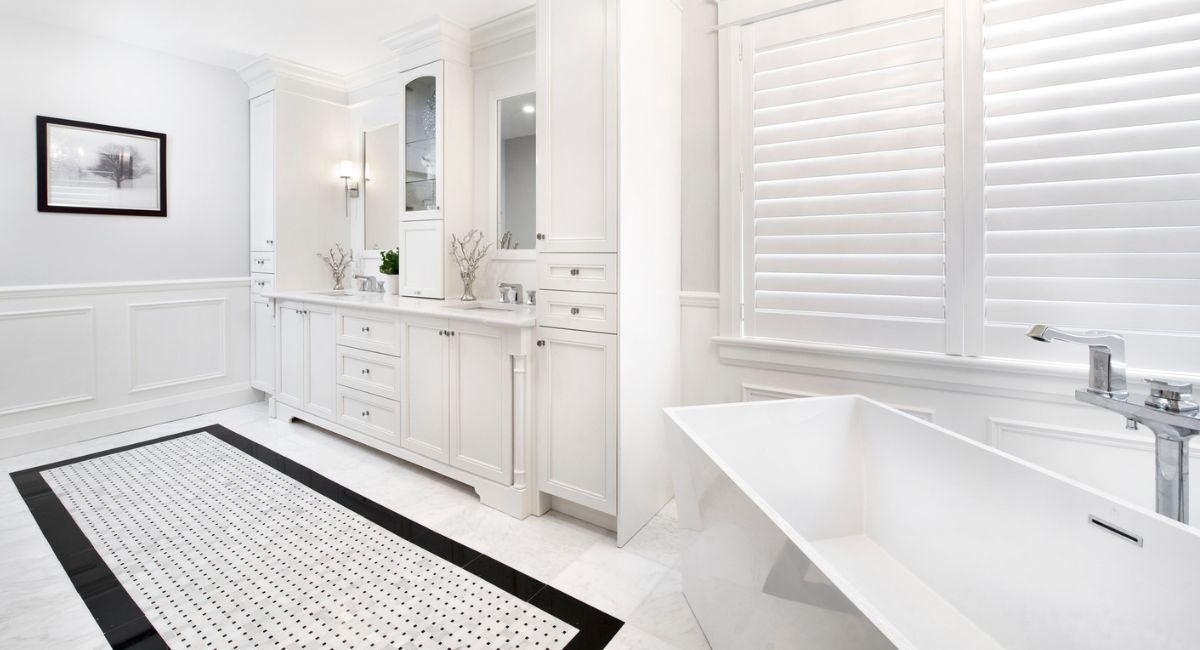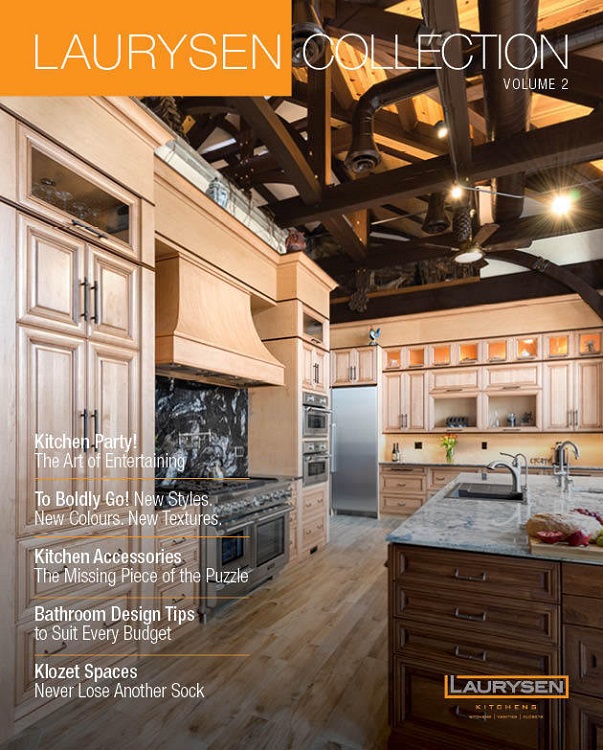Your bathroom is more than just a place to get ready for the day with a quick shower. With the right atmosphere, it can be a place of solitude, retreat, and relaxation. When you’re planning your bathroom renovation, you want to make the most of the space and everything in it. When customers ask us how to choose the best bathroom vanity, our team knows that making the right decision is about considering the harmony of every piece in the room.
Besides choosing the perfect bathroom vanity, the perfect bathtub is going to be the centrepiece of your spa bathroom, and if you’re in the market for a new bathtub, it’s important to do some research before diving in (pun intended) and starting any custom bathroom renovations.
Let’s take a look at different bathtub choices to make the most of your bathroom renovation. Here at Laurysen, we know how important it is to consider your space and think about which pieces will fit the best. Our guide will give you everything you need to know to choose the right tub for you.
How to Choose the Right Bathtub
There are many factors to consider before you’re ready to choose a bathtub. When making your initial list of bathtubs to try out, take these factors under consideration:
- Always start with the budget. How much can you realistically spend? With the number of options available today in bathtub material, size, and features, the price range is considerably wider than you might think. Do some initial research on how much a bathtub can cost, then make a decision and (this is the tough part!) stick to it.
- Who will you buy from? Another important factor is knowing who your sellers are. Look into different bathtub vendors to compare pricing and reviews.
- How much space do you have available for the bathtub? There’s not much point in dreaming about a gigantic carved-stone beauty if it won’t fit in your bathroom or there’s no way to get it up the stairs and into place.
- Who will be using the bathtub? Will this person be a senior who may need safety features like grab bars? What about small children? Think long-term, and allow for resale of the house if that’s something you’re considering for the future.
- What shape should the bathtub have? Corner bathtubs, for example, can be a great way to make use of space and improve traffic flow in the bathroom.
- Does the style of the bathtub support the overall look of your new bathroom? If you’ve always wanted a Victorian-style clawfoot tub, the rest of the room should work with it. Not that everything has to be matchy-matchy, but, as a whole, the design needs to work, even if you’re taking an eclectic approach.
Once you have a few finalists, that’s when you can start shopping and testing for fit. Let’s get into the nitty-gritty of our bathtub buying guide to help you decide what will be your perfect bathtub.
Types of Bathtubs
There are plenty of bathtub styles and types of bathtubs to choose from nowadays. The key deciding factors (aside from budget) will be the amount of space you have to work with and what materials you prefer.
Freestanding
This is one of the most popular styles of bathtubs, and it’s easy to see why. The average size of a freestanding tub can fit just about anywhere without being constrained to walls (you’ll have to consider pipe placement, of course). What’s more, a freestanding soaking tub serves as a knockout centrepiece in any bathroom. A vintage clawfoot tub, cast iron tub, or a show-stopping natural stone tub would all be in this category. When comparing freestanding tubs to most drop-in tubs, you’ll find they are comparably priced, and both are made from standard materials. A freestanding tub, though, is usually nice and deep, so it’s considered a proper soaking tub.
Average size: 55 to 72 inches long, 27 to 32 inches wide and 15 to 20 inches high.
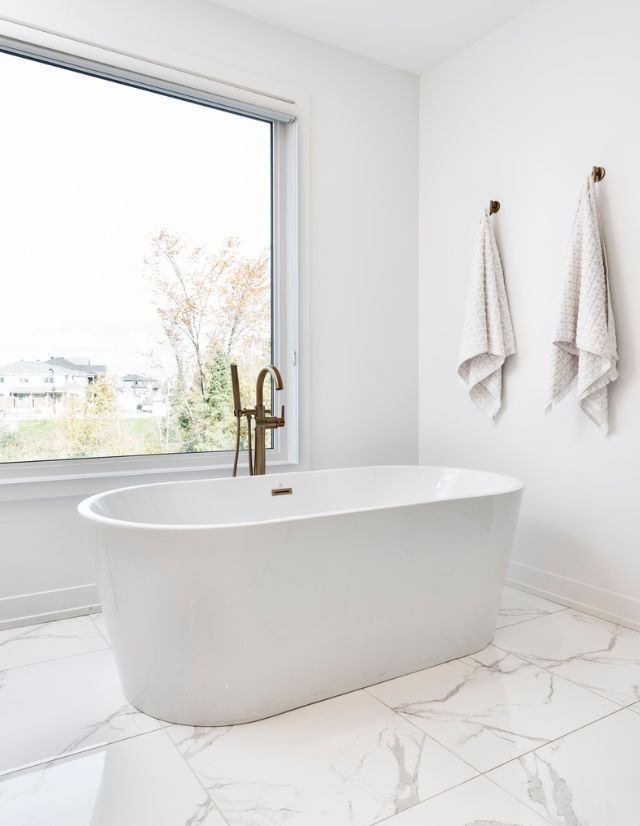
Drop-In
These types of bathtubs are dropped into an existing frame, known as a surround, and usually have two or even three sides open. The surround is a great place to echo the entire bathroom’s design while still giving you the flexibility of placement that comes with a freestanding tub. Perhaps the best reason to choose this type of tub is if you’re set on having a whirlpool tub or air tub. A surround is necessary to accommodate the extra plumbing required for these types of bathtubs.
Average size: 45 to 72 inches long, 30 to 32 inches wide and 14 to 20 inches high.
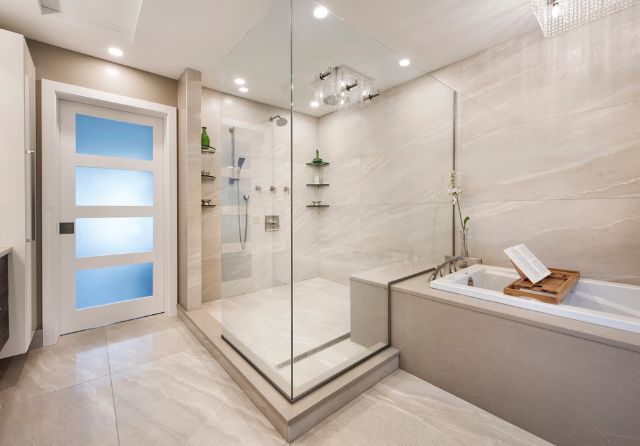
Alcove or Built-In
Most, if not all, homes you’ve seen have likely had this standard bathtub style. Long and rectangular, with three walls enclosing the unit, an alcove bathtub is a classic for a reason. These tubs make for a great shower bath combo since you only need to add a shower curtain. If they’re not placed in a purpose-built alcove, they’re usually in a corner with a separate wall built in to close off the open short end. It’s the ideal tub setup if you’re short on space or prefer to keep the middle of the bathroom free-flowing.
Average size: 60 inches long, 30 inches wide, and 18 inches high.
Oval
Oval tubs, such as the classic clawfoot bathtub, as well as more modern versions, are freestanding bathtubs that are—you guessed it—oval rather than rectangular. These tubs make great soaking tubs, as their shape is slightly longer and more comfortable to rest against. In addition, these hold more bathwater than a standard bathtub, with a depth that can reach up to three feet.
Average size: 60 inches long, 41 inches wide and 24 inches high.
Corner
Corner bathtubs are larger than a standard tub and are commonly whirlpool tubs or air tubs. Conveniently tucked into the corner of your bathroom, the surround can have three or five sides (which makes it both a corner bathtub and a drop-in bathtub). A great soaking tub, these are more like a hot tub than any other bathtub type, as there’s plenty of room for the extra plumbing required.
Average size: 60 inches long, 60 inches wide and 22 inches high.
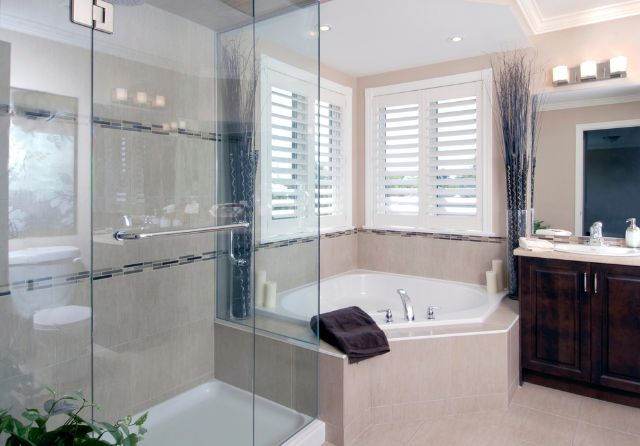
Walk-In
A walk-in bathtub has a door built into the side of it, making the bathtub easier for those with limited mobility (such as older people or those with disabilities or chronic pain) to access the tub without having to step over the rim of the tub. A walk-in tub will also have a built-in chair for the bather to sit in—instead of lying on the tub’s floor. This type of tub holds 50-55 gallons of water, with a soaking depth of 24-48 inches.
Average size: 60 inches long and 30 inches wide, and 20-45 inches high.
Types of Bathtub Materials
Once you’ve decided on the shape and position of your bathtub, you also need to consider bathtub materials. Again, there are lots of choices to suit your tastes and budget, each with its own pros and cons.
Fibreglass
This is the most popular—and most economical—option. Fibreglass bathtubs are made of lightweight plastic material that’s easy to install and maintain. However, fibreglass is a porous material, which means it can absorb water. Over time, this can cause the finish to yellow, fade, or crack.
Acrylic
A popular alternative to fibreglass, acrylic tubs are lightweight, have excellent durability, and retain heat well. They’re made of moulded petrochemicals, stabilizers, resin and dyes, and they are available in many different styles and sizes. However, they do run slightly more expensive than fibreglass.
Marble
Marble will retain heat very well and is exceptionally durable. Plus, it looks gorgeous, with a pearlescent shine. Unfortunately, while this material is a classic, it isn’t as popular due to its immense weight and expense.
Copper
Truly a work of art, a copper tub is a statement piece in any home. Copper is a metal, so it retains heat well and is naturally anti-bacterial and mildew resistant. The drawback here will be the cost, which can be 2-3 times more expensive than the other types on the market.
Cast Iron
A cast iron tub with a porcelain enamel coating stays shiny and glossy and is easy to fix if it chips or rusts. It also boasts amazing heat retention and durability. The drawback to this material is its weight. These tubs can tip the scales up to 500 pounds, so you may need to install additional floor support.
Stone Resin
This bathtub is made of crushed natural stones and polymer resin. It has the look and feel of stone without the added weight and cost, retains heat and won’t fade over time. And, with a moderate price, it’s a great eco-friendly option that looks gorgeous in any bathroom. The limiting factor here is that there aren’t as many style choices as compared to other materials.
Ceramic
Ceramic tubs are formed by fusing numerous ceramic tiles together until they set and harden. Since ceramic is quite similar to clay, it comes in many different styles, colours, and sizes. However, ceramic is a material you must regularly maintain (or it will eventually deteriorate).
Porcelain-Enameled Steel
This is a good option if you’d like the look and feel of cast iron without all the weight. These tubs have a porcelain coating over moulded steel, making them an incredibly durable option. They aren’t too expensive and are easy to clean. However, porcelain can chip and rust, though this type of damage is repairable.
Contact a Designer for Your Bathroom Renovation
If you’re feeling overwhelmed with all options and need help choosing the perfect tub for your renovated bathroom, you’re not alone! There are more choices than ever these days, so why not talk to one of Laurysen’s expert designers about your ideas?
Laurysen’s team will guide you through the process and make sure you end up with a harmonious renovated bathroom that you’ll love for years to come.
